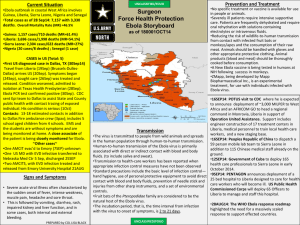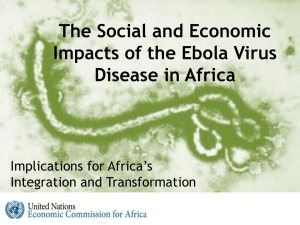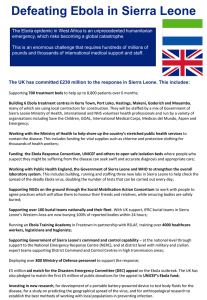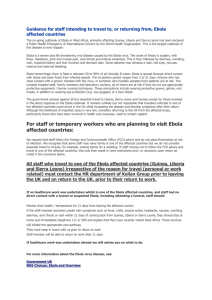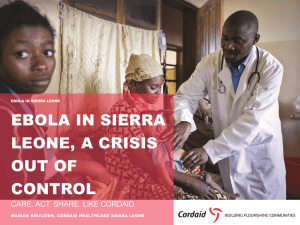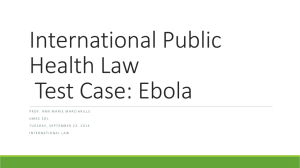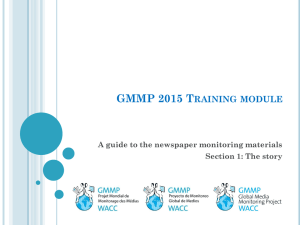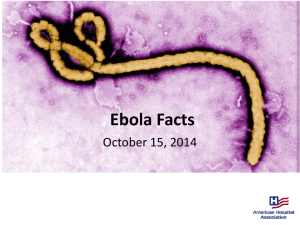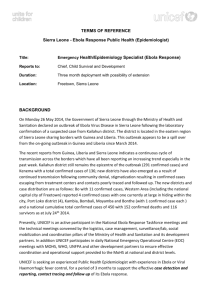Model Results
advertisement
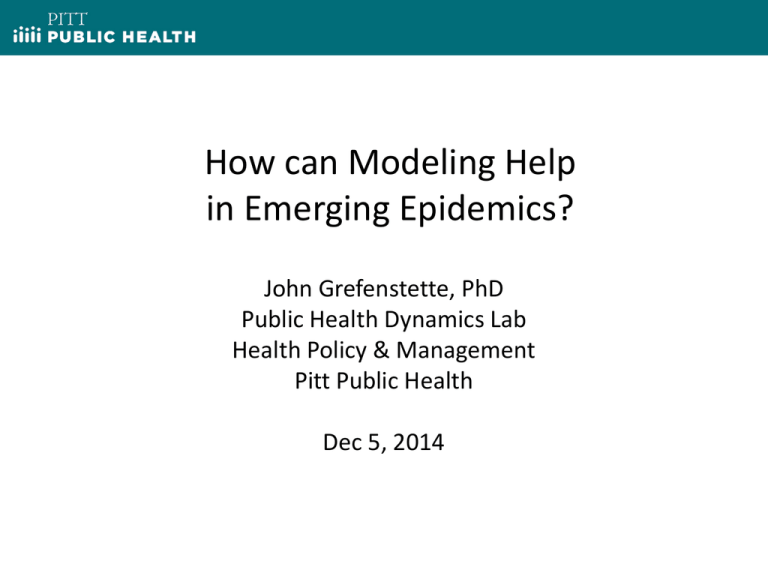
How can Modeling Help in Emerging Epidemics? John Grefenstette, PhD Public Health Dynamics Lab Health Policy & Management Pitt Public Health Dec 5, 2014 Modeling Ebola Outline Current status Near term projections Potential for spread outside Africa Perspectives Ebola Outbreak WHO Situation Report (12/3/14) • 17,145 reported cases of Ebola virus disease (EVD) • 6070 reported deaths • Case fatality rate across the three most-affected countries in all cases with a recorded definitive outcome is 72% • Case fatality rate is 60% in hospitalized patients • Case incidence is slightly increasing in Guinea, stable or declining in Liberia, and may still be increasing in Sierra Leone. http://www.who.int/csr/disease/ebola/situation-reports http://www.cdc.gov/vhf/ebola/outbreaks/2014-west-africa/casecounts.html Models of Epidemics Key parameter: R0 = the expected number of secondary cases infected by an index case in an entirely susceptible population Estimate R0 from doubling rate at start of outbreak Use mathematical models to compute expected incidence Identify possible interventions (eg isolation, contact tracing, safe burial) Use models to explore alternative interventions to estimate costs and benefits JH Jones, Stanford Univ, 2007 Comparison with other diseases Infection R0 Ref Ebola (2014) 1.71 – 2.02 Influenza (1918) 1.8 Mills et al., 2004 Measles 18.8 Anderson & May, 1991 Pertussis 3.8 – 5.6 Anderson & May, 1991 SARS 2.7 – 3.6 Wallinga & Teunis, 2005 Smallpox 4 – 10 Anderson & May, 1991 WHO Ebola Resp Team, 2014 Important notes: Transmission of Ebola requires close contact with infected bodily fluids. Uncertainties about current Ebola data: Undetected / unreported cases Asymptomatic infections Level of prior immunity in the population Cross-border mobility patterns Early Projections Projections made based on observation through 8/26/14 Liberia: With No Intervention Liberia: With Intervention Used sparse data available at the time Criticized for being too alarmist (Nature, Nov 6) "As these measures [isolation, safe burial practices] are rapidly implemented and sustained, the higher projections presented in this report become very unlikely." Meltzer et al. Centers for Disease Control and Prevention (CDC). Estimating the future number of cases in the Ebola epidemic--Liberia and Sierra Leone, 2014-2015. MMWR Surveill Summ. 2014 Sep 26;63 Suppl 3:1-14. PubMed PMID: 25254986. Model of Ebola Transmission Susceptible Exposed Infectious Hospitalized Dead but not buried Fig 5: Gomes et al. PLOS Currents Outbreaks. 2014 Sep 2. No longer infecting Based on its models, the CDC projects that stopping the epidemic requires isolating up to 70% of patients in treatment centers or other settings that reduce transmission, assuming that burials are handled safely. Human Mobility Models The rapid spread of the virus may be driven by local and regional travel. Epidemiological models of the spatial spread of Ebola rely on estimates of the volumes and flows of traffic between populations Models can estimate human mobility patterns from mobil call data records. Mobility can be a target of control measures. Wesolowski et al. PLOS Currents Outbreaks. 2014 Sep 29 Potential for International Spread Modeling Methods • Analyze air flight networks, passenger flows and destinations • Evaluate risks to destination countries Figure 2 Final traveller destinations, passenger volumes * and scheduled non-stop flights† departing Guinea, Liberia, and Sierra Leone *From Sept 1, 2013, to Dec 31, 2013. †From Sept 1, 2014, to Dec 31, 2014. Model Results: • Highest risk to Ghana and Senegal in Africa • Risk to UK and France combined is about 8 times risk to U.S. • Travel screening helps reduce risk of international spread • Exit screening (alone) more effective than entrance screening (alone). Bogoch et al. The Lancet (2014). Gomes et al PLOS Currents Outbreaks. 2014 Sep 2 Summary Contribution from early Ebola models Projections of the number of cases Potential effects of interventions Analysis of local mobility patterns Likelihood of international dissemination Topics for future models Causes of this outbreak: – Social disruption, climate change, urbanization, behaviors? Efficiency of response: – Within Africa – Within U.S. Questions? More info on epidemic modeling: www.phdl.pitt.edu

